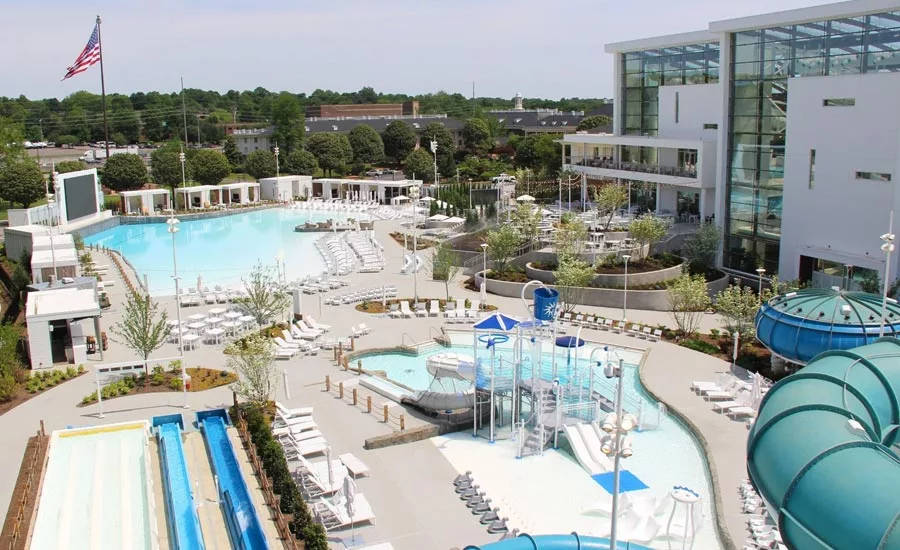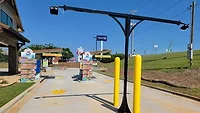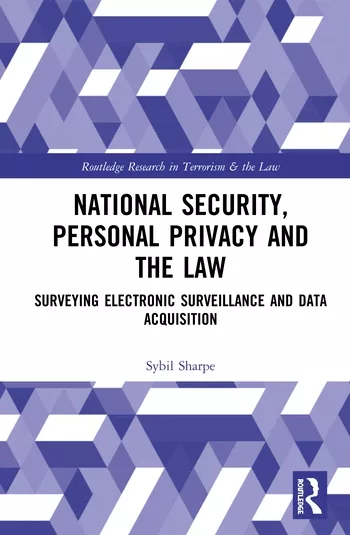Case Study: Integrated Solutions
The Gaylord Opryland Resort boosts security

The Gaylord Opryland Resort embarked on a state-of-the-art video surveillance upgrade to boost security and operational efficiency.
Photo courtesy of Marriott International

The sprawling Gaylord Opryland Resort campus encompasses a hotel with more than 3,000 suites and rooms, a smaller adjacent hotel with more than 300 rooms, a golf course, waterpark, Delta flatboat, 15 restaurants, multiple convention facilities, and a garden conservatory.
Photos courtesy of Marriott International

The sprawling Gaylord Opryland Resort campus encompasses a hotel with more than 3,000 suites and rooms, a smaller adjacent hotel with more than 300 rooms, a golf course, waterpark, Delta flatboat, 15 restaurants, multiple convention facilities, and a garden conservatory.
Photos courtesy of Marriott International

The sprawling Gaylord Opryland Resort campus encompasses a hotel with more than 3,000 suites and rooms, a smaller adjacent hotel with more than 300 rooms, a golf course, waterpark, Delta flatboat, 15 restaurants, multiple convention facilities, and a garden conservatory.
Photos courtesy of Marriott International

The sprawling Gaylord Opryland Resort campus encompasses a hotel with more than 3,000 suites and rooms, a smaller adjacent hotel with more than 300 rooms, a golf course, waterpark, Delta flatboat, 15 restaurants, multiple convention facilities, and a garden conservatory.
Photos courtesy of Marriott International

The sprawling Gaylord Opryland Resort campus encompasses a hotel with more than 3,000 suites and rooms, a smaller adjacent hotel with more than 300 rooms, a golf course, waterpark, Delta flatboat, 15 restaurants, multiple convention facilities, and a garden conservatory.
Photos courtesy of Marriott International

The Resort had high-resolution cameras installed in high-traffic areas, allowing them more coverage with less cameras.
Photo courtesy of Marriott International

A video wall allows resort operators to view important incidents all in one place.
Photo courtesy of Marriott International
Marriott International’s largest Marriot property in the world, the Gaylord Opryland Resort and Convention Center in Nashville needed a security upgrade at its sprawling campus to enhance security and efficiency and its risk management operations.
Marriott International Inc. is the largest hospitality company in the world, and the Gaylord Opryland Resort and Convention Center is the largest Marriott-managed property in the world. Located in Nashville, Tennessee, Gaylord Opryland offers visitors the chance to experience Music City under a single roof. The 700,000-square-foot resort encompasses a sprawling campus, including a hotel with more than 3,000 suites and rooms, a smaller adjacent hotel with more than 300 rooms, a golf course, waterpark, Delta flatboat, 15 restaurants, multiple convention facilities, and a Garden Conservatory that includes waterfalls and nine acres of indoor gardens.
Gaylord Opryland Resort’s Safety and Security Director Greg Pezzo and his team work to ensure the safety and security of the 2,500-member staff and hundreds of thousands of guests each year at the Gaylord Opryland and at the nearby 300-room Inn at Opryland. Pezzo is responsible for managing the day-to-day operations of the resort's fire system, security patrol and video surveillance system. He is also the manager responsible for dealing with claims against the resort and worker's compensation issues. Pezzo has been with the Marriott organization for more than 23 years and has been at the Gaylord Opryland Resort for the last four years. He describes himself as a “risk management professional for the whole resort, dealing with claims, the local police department, fire patrol, event security, and safety.”
Ryman Hospitality, the organization that owns Gaylord Brand Hotels, decided to embark on a detailed risk assessment of their properties in 2017. Among other areas of improvement, after evaluating several years of resort data that included traffic patterns and incident locations, third-party assessors discovered that surveillance systems were lacking in all of the hotels, including at the Gaylord Opryland Resort.
As a result of the risk assessment, ownership decided to invest in a complete security upgrade of all its hotels and chose the Gaylord Opryland as its test case. The strategy was to use Opryland as the model and eventually upgrade the other five Gaylord hotels following its success.
"We had cameras that weren't working. We had cameras installed in the wrong areas. It was very difficult to play back and extract video — and when we could get video out of the system, it was so poor it wasn't usable," Pezzo says. "It was an abysmal system for a property of this size and complexity."
A State-of-the-Art Upgrade
The resort invested in additional security staff and new security vehicles. They also committed to investing nearly $2.5 million in a new video surveillance system, which included 1,500 cameras from Hanwha Techwin, system servers and video analytics — managed by the open platform XProtect Corporate video management software (VMS) from Milestone Systems.
"We needed to significantly increase our video coverage throughout the property," Pezzo explains. "We needed high-quality cameras, a video-optimized network server system, and an easy-to-use VMS system. And we needed to partner with an integration professional who could bring it all together."
Working with integrator Herring Technology, the team deployed its new solution from November 2019 until September 2020. The resort purchased a variety of Hanwha cameras, including 145 XND-6010 full HD cameras with video analytics, 182 Q series indoor and outdoor dome cameras with IR, and more than 20 PNM 7000 and 9000 multi-directional cameras.
According to Pezzo, one of the main functions of the upgraded system is protecting the resort against false claims.
"Our main objective for a video system is to help mitigate false claims and protect against liability from other potential lawsuits. Marriott is a big target and claims are expensive, so this is where our ROI comes in," Pezzo says. "With an effective camera system like we have now, we're able to see if there are inaccuracies in a claim, perhaps we can see where a guest simply tripped on their own or was doing something silly that caused an injury. Or, in the worst case, we can see where someone simply laid down on the floor and is claiming that they slipped. Having these events captured in high-quality video is nearly priceless.
He continues, “Our new cameras provide excellent overall quality and digital zoom. The 4K cameras are amazing — we've never seen a clearer image. If there's an event or claim, with the Milestone VMS we can easily call up and share recorded video to see exactly what happened. In fact, on the very first day we had a camera installed, someone fell. They tried to make a claim, but we could see that they simply stumbled over their own feet, and there was nothing about the floor that contributed to the fall."
The security team ensured cameras were placed in high-volume areas where they had experienced problems in the past and also where they didn’t have cameras previously. They also looked at their own data relating to theft and other incidents to help determine camera location. In areas where they needed a better view, they chose 4K resolution cameras for a clearer picture.
As for the servers behind the system, the team installed 21 Dell RAID 6 units with 192 terabytes, each for a total of 3.6 petabytes of storage. Four Dell video wall servers run the Milestone Smart Wall, which uses 18 monitors with 55-inch 4K displays. An additional set of four Dell servers are being installed for future use with the BriefCam video analytic software.
"Already, we're able to track someone as they move around the property — it's very impressive," Pezzo says of the video analytic software. "BriefCam is still new to us, but we're really excited to utilize that software much more in the future, especially when we can get back to hosting large events."
He adds, “The ability to see an individual this clearly as they move through our spaces is incredible. In the past, we would lose people in uncovered sections. They would just disappear. But that doesn’t happen anymore.”
Technology: Doing More With Less
Improved visibility is another major benefit of the upgrade and provides the resort’s security team with an expanded view of the property. For example, previously, a single camera in the lobby could only provide coverage for one door. Now, one camera is able to cover six. In other high-volume locations, like the valet area, the resort has deployed multi-sensor cameras that provide a clear 360-degree view.
And these features have come in handy during COVID-19. Pezzo explains that in the face of the pandemic, his team has not only dealt with a reduction in visitors and guests, but also a reduction in staff. The new video system allows the smaller security group to continue to cover the entire property. Pezzo has dispatchers around the clock who monitor the video system in real-time, as well as an investigator who reviews recorded video of anything out of the ordinary, such as a car parked in a restricted area or a trespasser in a back-of-house area. Motion detection tools built into the VMS help with this type of surveillance.
"We never had motion detection before, and it has helped us greatly with our staffing levels," says Pezzo. “We can use motion detection to cover areas late at night where we know nobody should be. When a person walks into one of these motion cover areas, the VMS alerts us, and we can dispatch a security person to the location."
The Milestone Smart Wall system helps each shift of operators manage their camera views, Pezzo adds. Depending on the time of day, each of the three operator shifts needs to monitor different cameras. The video wall is set up to automatically switch camera views with each shift change. There are times when a single operator is looking at 13 screens with more than 100 camera views, which can be a daunting task.
Additionally, Pezzo and his team use the XProtect LPR, which is software that reads license plate information from vehicles and links the license plate information with video. Pezzo uses the license plate recognition feature to manage ridesharing drivers who frequent the property. While rideshare services are allowed, the resort has designated pick-up and drop-off areas with 10-minute parking limits. The LPR technology identifies rideshare vehicles as soon as they enter the property, helping staff to track drivers who exceed parking time limits, or become a nuisance by littering or bothering guests.
For the Gaylord Opryland Resort, the upgrade has had an immediate impact. For 2021, the resort plans to invest in more new cameras as the budget becomes available.
Looking for a reprint of this article?
From high-res PDFs to custom plaques, order your copy today!






